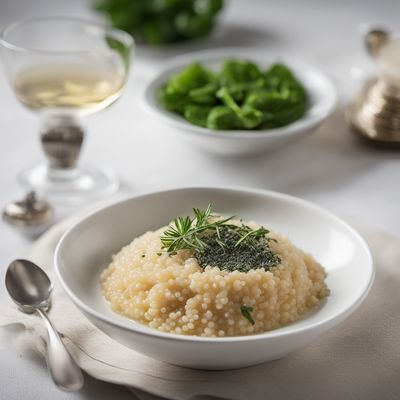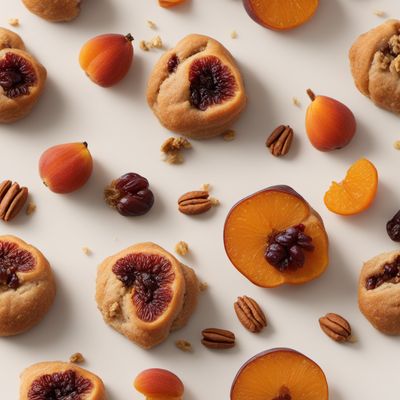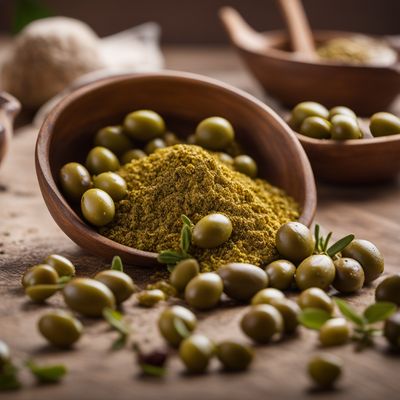
Ingredient
Olive oil, virgin or extra-virgin
Liquid Gold
Virgin or extra-virgin olive oil is a high-quality oil extracted from olives through mechanical means, without the use of chemicals or excessive heat. It has a distinct fruity and peppery flavor, with a golden-green color and a smooth texture.
Origins and history
Olive oil has been produced and consumed for thousands of years, with its origins dating back to ancient civilizations in the Mediterranean region. It has played a significant role in Mediterranean cuisine and has been valued for its health-promoting properties.
Nutritional information
Virgin or extra-virgin olive oil is rich in monounsaturated fats, which are beneficial for heart health. It also contains antioxidants and anti-inflammatory compounds, such as polyphenols and vitamin E. It is a calorie-dense ingredient, with approximately 120 calories per tablespoon.
Allergens
Olive oil may cause allergic reactions in individuals with olive allergies. It is also high in calories and should be consumed in moderation, especially for individuals watching their calorie intake.
How to select
When selecting virgin or extra-virgin olive oil, look for a reputable brand that indicates the country of origin and the harvest date. Opt for oils that are stored in dark glass bottles or tins to protect them from light exposure. Consider the flavor profile and intensity of the oil, choosing a milder oil for delicate dishes and a robust oil for more robust flavors.
Storage recommendations
To maintain its freshness and quality, store virgin or extra-virgin olive oil in a cool, dark place away from direct sunlight and heat sources. Keep the bottle tightly sealed to prevent oxidation. Avoid storing it near strong-smelling foods to prevent flavor absorption.
How to produce
Virgin or extra-virgin olive oil is produced by crushing olives and extracting the oil through mechanical means. It can be produced on a small scale using a home olive press or purchased from reputable olive oil producers. However, commercial production requires specialized equipment and expertise.
Preparation tips
Virgin or extra-virgin olive oil can be used in various culinary applications, including salad dressings, marinades, sautéing, and drizzling over finished dishes. It is also commonly used as a dipping oil for bread or as a finishing touch to enhance the flavors of soups, stews, and grilled vegetables.
Culinary uses
Virgin or extra-virgin olive oil is a staple in Mediterranean cuisine, particularly in dishes from Italy, Greece, Spain, and other countries in the region. It is also widely used in international cuisines and is a versatile ingredient in both savory and sweet recipes.
Availability
Virgin or extra-virgin olive oil is commonly available in grocery stores, supermarkets, and specialty food markets worldwide. It is produced in countries such as Italy, Greece, Spain, and the United States, among others.
More ingredients from this category
Recipes using Olive oil, virgin or extra-virgin » Browse all

Greek-style Potato Salad
Mediterranean Delight: Greek-style Potato Salad

Caviar Risotto
Luxurious Caviar Risotto: A Decadent Delight from Italy

Ulam-inspired Neapolitan Salad
A Fusion of Flavors: Neapolitan Salad with a Malaysian Twist

Eptazimo - Greek Seven-Layer Dip
Mediterranean Delight: Layers of Flavor in Greek Eptazimo

Mediterranean Vegetable Risotto
Sun-Kissed Mediterranean Vegetable Risotto

Pinza Veneta - Traditional Italian Sweet Bread
Venetian Delight: A Sweet Journey through Italian Cuisine

Mediterranean Tomato Bruschetta
Sun-Kissed Tomato Bruschetta: A Taste of the Mediterranean

Greek Spinach and Feta Sfougato
Mediterranean Delight: Greek Spinach and Feta Sfougato

Venetian Saor with Sweet and Sour Onions
Tangy Delight: Venetian Sweet and Sour Onions

Bagna Càuda with Roasted Vegetables
Savory Delight: Roasted Vegetable Bagna Càuda

Pasta Caprese with a Twist
Mediterranean Delight: Pasta Caprese with a Burst of Flavor

Estonian Beetroot and Potato Salad
Vibrant Baltic Delight: Estonian Beetroot and Potato Salad

